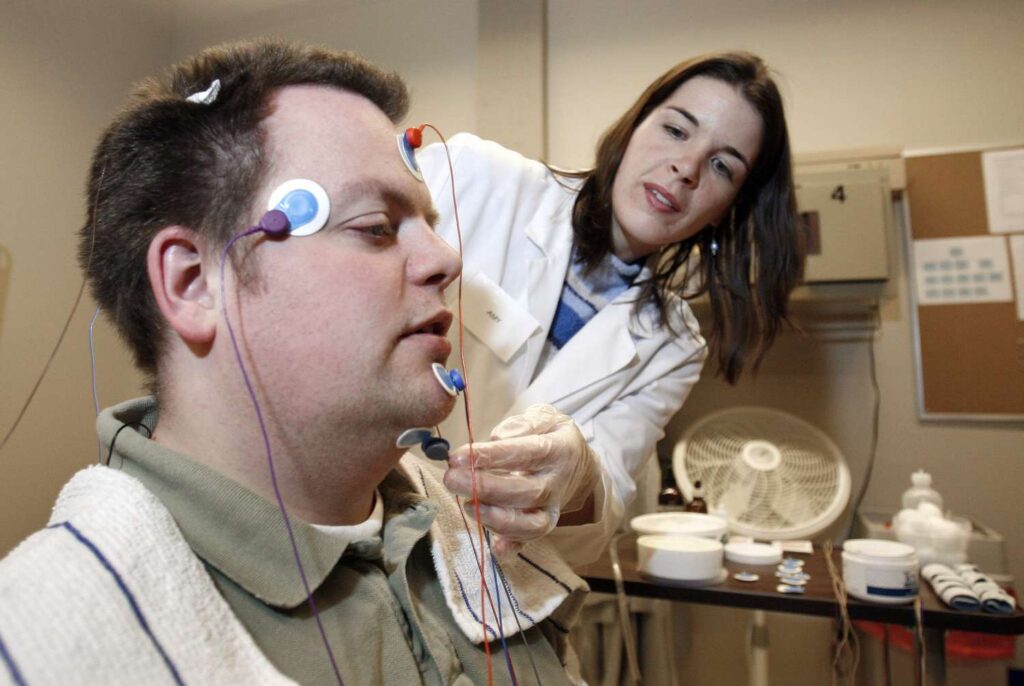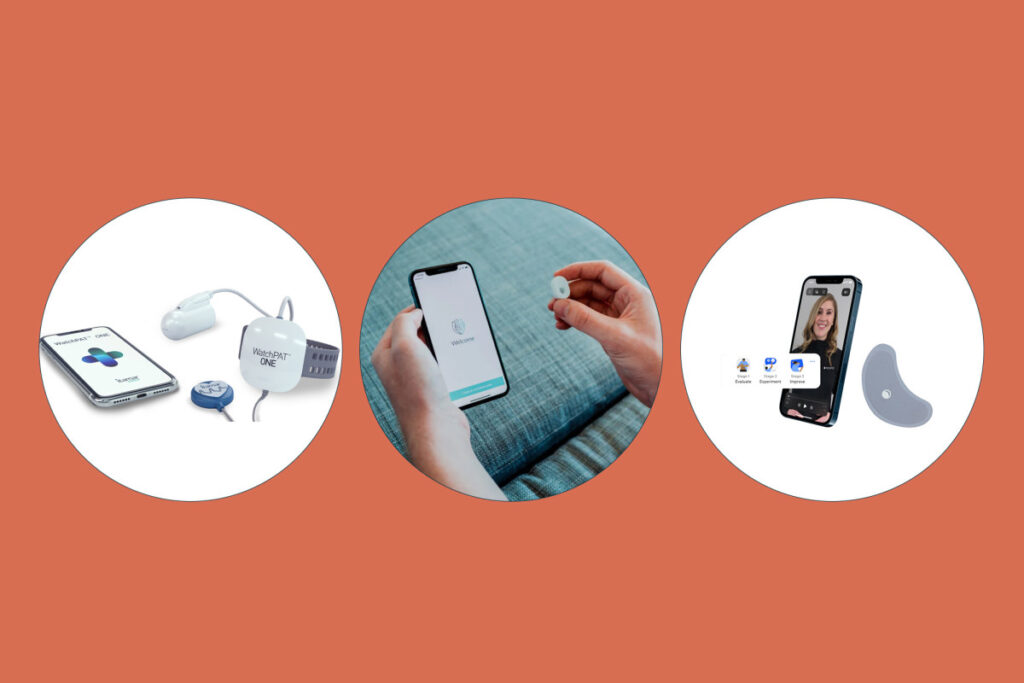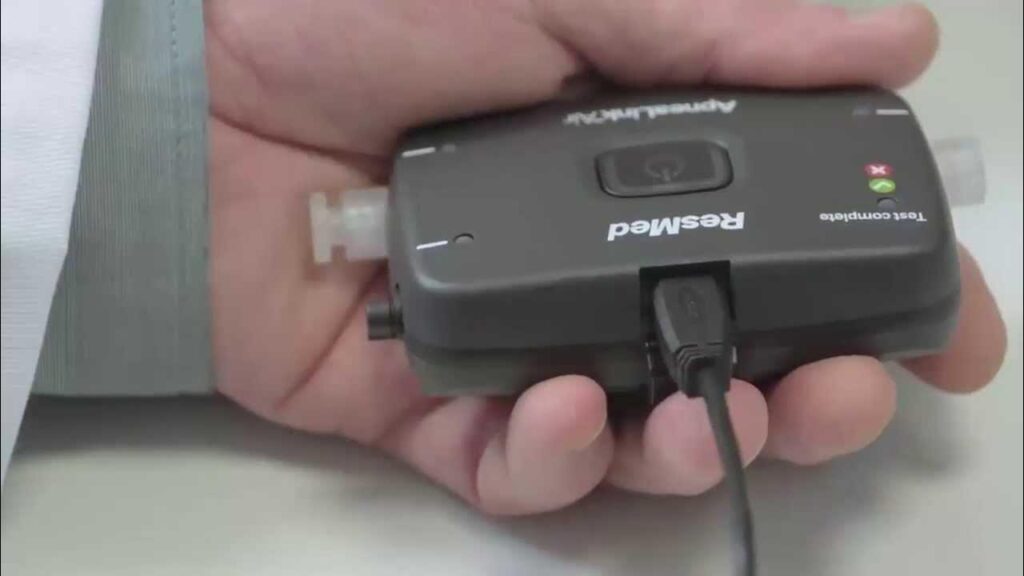Sleep apnea is a common sleep disorder that affects millions of people worldwide. It is characterized by interruptions in breathing during sleep, which can lead to poor sleep quality and various health issues. Understanding sleep apnea is crucial in identifying its symptoms and risks, as well as finding effective solutions for better sleep.
In this article, we will explore the concept of sleep apnea, its symptoms and risks, the importance of sleep apnea home test Australia, and DIY solutions that can improve your sleep quality.
Understanding Sleep Apnea
Sleep apnea is a complex sleep disorder that affects millions of people worldwide. It is characterized by repetitive pauses in breathing during sleep, disrupting the normal sleep cycle and preventing restorative rest. These pauses, known as apneas, can last for a few seconds to a minute and can occur multiple times throughout the night, leading to fragmented sleep patterns and excessive daytime sleepiness.
Obstructive sleep apnea (OSA) is the most common type of sleep apnea, where the upper airway becomes partially or completely blocked during sleep, resulting in interrupted breathing. This blockage can be caused by various factors such as excess weight, anatomical abnormalities, or relaxed throat muscles. On the other hand, central sleep apnea (CSA) is a less common form that occurs when the brain fails to send proper signals to the muscles that control breathing. Mixed sleep apnea is a combination of both OSA and CSA, presenting unique challenges in diagnosis and treatment.
What is Sleep Apnea?
During sleep apnea episodes, the muscles in the back of the throat fail to keep the airway open, leading to shallow or paused breathing. This results in a drop in oxygen levels in the blood and triggers the brain to briefly wake the individual to resume normal breathing. These disruptions not only impact the quality of sleep but also strain the cardiovascular system over time, increasing the risk of developing serious health conditions.
Furthermore, untreated sleep apnea can have far-reaching consequences beyond physical health. The chronic sleep deprivation caused by this condition can impair cognitive function, memory retention, and emotional regulation, affecting overall well-being and quality of life.
Symptoms and Risks of Sleep Apnea
Recognizing the symptoms of sleep apnea is crucial for timely intervention and management. Common signs include loud snoring, gasping for air during sleep, morning headaches, excessive daytime sleepiness, difficulty concentrating, and irritability. If left untreated, sleep apnea can contribute to a range of health risks, including hypertension, cardiovascular disease, stroke, type 2 diabetes, and metabolic disorders. Additionally, the sleep disturbances associated with this condition can exacerbate mental health issues such as depression, anxiety, and mood disorders, underscoring the importance of seeking professional evaluation and treatment.
The Importance of Sleep Apnea Testing
Testing for sleep apnea is essential in identifying the presence and severity of the condition. While there are various diagnostic options available, such as overnight sleep studies conducted in sleep labs, home sleep apnea test kits provide a convenient and cost-effective alternative.
When it comes to diagnosing sleep apnea, accuracy is key. Sleep apnea is a common sleep disorder characterized by pauses in breathing or shallow breaths during sleep. These interruptions can last from a few seconds to minutes and may occur multiple times during the night. By undergoing sleep apnea testing, individuals can determine the frequency and duration of these breathing interruptions, which is crucial for effective treatment.
Why Test for Sleep Apnea?
Sleep apnea testing is crucial for accurately diagnosing the condition and developing appropriate treatment plans. Identifying and treating sleep apnea can significantly improve one’s quality of life, reducing daytime drowsiness, improving cognitive function, and reducing the risk of associated health problems.
Moreover, untreated sleep apnea can impact not only the individual experiencing it but also their bed partner. The loud snoring and gasping for air that often accompany sleep apnea can disrupt the partner’s sleep, leading to potential strain on the relationship. By undergoing testing and seeking treatment, individuals can not only improve their own health but also enhance the quality of sleep for their loved ones.
Consequences of Untreated Sleep Apnea
Untreated sleep apnea can have serious consequences on both physical and mental health. The lack of quality sleep can lead to chronic fatigue and contribute to accidents and injuries. Additionally, sleep apnea has been linked to an increased risk of cardiovascular diseases, including hypertension, heart attack, and stroke. Treating sleep apnea can help mitigate these risks and improve overall well-being.
Furthermore, the cognitive effects of untreated sleep apnea should not be overlooked. Studies have shown that individuals with untreated sleep apnea may experience difficulties with concentration, memory, and decision-making. By addressing the underlying sleep apnea through testing and treatment, individuals can potentially enhance their cognitive abilities and overall mental well-being.

Home Sleep Apnea Test Kits in Australia
Home sleep apnea test kits are becoming increasingly popular in Australia due to their convenience and affordability. These kits allow individuals to conduct sleep studies from the comfort of their own homes, providing valuable data to diagnose sleep apnea.
As awareness about sleep disorders like sleep apnea grows, the demand for home test kits has surged. This trend is not only seen in Australia but also in many other countries around the world. The ease of use and accessibility of these kits have made them a preferred choice for individuals seeking to understand their sleep patterns and potential health issues.
What is a Home Sleep Apnea Test Kit?
A home sleep apnea test kit typically includes a portable device with sensors that monitor your breathing, oxygen levels, and heart rate during sleep. These devices are user-friendly and require minimal setup. They provide a convenient option for individuals who suspect they may have sleep apnea but prefer to avoid formal sleep lab studies.
The data collected by these home test kits is crucial for healthcare professionals to make an accurate diagnosis and recommend appropriate treatment. By monitoring key indicators during sleep, such as apnea-hypopnea index (AHI) and oxygen desaturation levels, individuals can gain insights into the severity of their condition and take necessary steps towards improving their sleep quality and overall health.
Benefits of Using Home Test Kits
The benefits of using home sleep apnea test kits are numerous. Firstly, they allow for privacy and comfort in your own sleep environment, which can lead to more accurate results. Secondly, home test kits are generally more affordable than overnight sleep studies conducted in sleep labs. Lastly, using home sleep apnea test kits avoids the hassle of traveling to a sleep lab, making the testing process more convenient and accessible.
Moreover, the real-time data provided by these kits can empower individuals to track their sleep patterns over time and make informed decisions about their health. This self-monitoring aspect can be a valuable tool in managing sleep apnea and improving overall well-being. With advancements in technology, home sleep apnea test kits continue to evolve, offering more features and insights to users, further enhancing the effectiveness of at-home sleep studies.
How to Use a Home Sleep Apnea Test Kit
Using a home sleep apnea test kit is a straightforward process that can be done without medical supervision. Here is a step-by-step guide to using the kit:
Step-by-Step Guide to Using the Kit
- Read and follow the instructions provided with the home sleep apnea test kit.
- Attach the sensors to your body as directed, ensuring they are secure and comfortable.
- Go to bed at your regular bedtime and sleep as you normally would.
- In the morning, remove the sensors and return the kit as instructed.
It is essential to note that while home sleep apnea test kits are convenient and can provide valuable insights into your sleep patterns, they are not a replacement for a comprehensive sleep study conducted in a clinical setting. A home test can offer initial information, but a healthcare professional may recommend further evaluation if there are concerns about the accuracy of the results or the need for more detailed monitoring.
Additionally, it’s crucial to ensure that you are well-informed about the limitations of home sleep apnea test kits. These tests may not capture all the nuances of your sleep behavior and breathing patterns that a polysomnography conducted in a sleep center can detect. Therefore, if you have persistent symptoms of sleep apnea despite a negative home test result, further investigation may be necessary.
Interpreting Your Test Results
Once you have completed the home sleep apnea test, the data will be analyzed to determine whether you have sleep apnea and to what extent. It is important to consult with a healthcare professional to interpret the results accurately. They will provide guidance on the appropriate treatment options based on your individual needs.

DIY Solutions for Better Sleep
While home sleep apnea test kits are valuable in diagnosing sleep apnea, there are also various DIY solutions that can improve your sleep quality and overall well-being. These solutions focus on lifestyle changes and breathing exercises.
Lifestyle Changes for Sleep Apnea Management
Making certain lifestyle changes can help alleviate sleep apnea symptoms. These may include losing weight (if overweight), avoiding alcohol and sedatives before bed, sleeping in a side position instead of on your back, and establishing a consistent sleep schedule.
When it comes to losing weight, it’s important to note that excess weight can contribute to the narrowing of the airways, making it more difficult to breathe during sleep. By shedding those extra pounds through a combination of healthy eating and regular exercise, you can reduce the severity of sleep apnea symptoms and improve your overall sleep quality.
Avoiding alcohol and sedatives before bed is crucial as these substances can relax the muscles in your throat, leading to increased airway collapse and worsening sleep apnea symptoms. By abstaining from these substances, especially in the hours leading up to bedtime, you can promote better breathing and reduce the frequency of sleep disruptions.
Another lifestyle change that can make a significant difference is changing your sleep position. Sleeping on your back can cause the tongue and soft tissues in the throat to collapse, obstructing the airway and triggering sleep apnea events. By sleeping on your side, you can keep the airway open and reduce the likelihood of apnea episodes.
Establishing a consistent sleep schedule is also important for managing sleep apnea. Going to bed and waking up at the same time every day helps regulate your body’s internal clock, promoting better sleep quality and reducing the occurrence of sleep apnea events. Aim for a minimum of 7-8 hours of sleep each night to ensure you are well-rested and ready to take on the day.
Breathing Exercises and Techniques
Practicing specific breathing exercises and techniques can also be beneficial for individuals with sleep apnea. These exercises aim to strengthen the muscles involved in respiration and promote better breathing during sleep. They may include diaphragmatic breathing, pursed-lip breathing, and tongue and throat exercises. Consulting with a healthcare professional or sleep therapist can provide personalized guidance on appropriate breathing exercises.
Diaphragmatic breathing involves taking slow, deep breaths, allowing the diaphragm to fully expand and contract. This technique helps improve lung capacity and oxygenation, reducing the likelihood of breathing disruptions during sleep.
Pursed-lip breathing is another technique that can be helpful for sleep apnea sufferers. By inhaling slowly through the nose and exhaling through pursed lips, you create resistance in the airway, which helps keep it open and prevents collapse.
Tongue and throat exercises can also play a role in managing sleep apnea. These exercises target the muscles in the tongue and throat, strengthening them and improving their ability to maintain an open airway during sleep. Examples of tongue and throat exercises include tongue slides, throat singing, and swallowing exercises.
In conclusion, sleep apnea is a sleep disorder that can significantly impact one’s quality of life. Utilizing home sleep apnea test kits in Australia can provide an accessible and cost-effective means of diagnosing sleep apnea. However, it’s important to remember that these tests are just the beginning of the journey towards better sleep. By incorporating lifestyle changes such as weight loss, avoiding alcohol and sedatives before bed, sleeping in a side position, and establishing a consistent sleep schedule, along with practicing breathing exercises and techniques, individuals can improve their sleep quality and overall well-being. If you suspect you may have sleep apnea, don’t hesitate to explore the available DIY solutions and consult with a healthcare professional for proper diagnosis and treatment options.

